Abstract
Many pharmacogenomic biomarkers (PGBM) were identified and translated into clinical practice, affecting the usage of drugs via label updates. In this context, abacavir is one of the most brilliant examples of pharmacogenetic studies translated into clinical practice. Pharmacogenetic studies have revealed that abacavir HSRs are highly associated with the major histocompatibility complex class I. Large studies established the effectiveness of prospective HLA-B*57:01 screening to prevent HSRs to abacavir. Accordingly to these results the abacavir label has been modified: the European Medicines Agency (EMA) and the FDA recommend/suggested that the administration of abacavir must be preceded by a specific genotyping test. The HLA locus is extremely polymorphic, exhibiting many closely related alleles, making it difficult to discriminate HLA-B*57:01 from other related alleles, and a number of different molecular techniques have been developed recently to detect the presence of HLA-B*57:01. In this review, we provide a summary of the available techniques used by laboratories to genotype HLA-B*57:01, outlining the scientific and pharmacoeconomics pros and cons.
Keywords: HLA-B*57:01, abacavir, hypersensitivity reaction (HSR), pharmacogenomics, histocompatibility complex class I, Comparative Analysis, alleles, nucleoside reversetranscriptase, inhibitor
Current Genomics
Title:The Pharmacogenomic HLA Biomarker Associated to Adverse Abacavir Reactions: Comparative Analysis of Different Genotyping Methods
Volume: 13 Issue: 4
Author(s): Laura Stocchi, Raffaella Cascella, Stefania Zampatti, Antonella Pirazzoli, Giuseppe Novelli and Emiliano Giardina
Affiliation:
Keywords: HLA-B*57:01, abacavir, hypersensitivity reaction (HSR), pharmacogenomics, histocompatibility complex class I, Comparative Analysis, alleles, nucleoside reversetranscriptase, inhibitor
Abstract: Many pharmacogenomic biomarkers (PGBM) were identified and translated into clinical practice, affecting the usage of drugs via label updates. In this context, abacavir is one of the most brilliant examples of pharmacogenetic studies translated into clinical practice. Pharmacogenetic studies have revealed that abacavir HSRs are highly associated with the major histocompatibility complex class I. Large studies established the effectiveness of prospective HLA-B*57:01 screening to prevent HSRs to abacavir. Accordingly to these results the abacavir label has been modified: the European Medicines Agency (EMA) and the FDA recommend/suggested that the administration of abacavir must be preceded by a specific genotyping test. The HLA locus is extremely polymorphic, exhibiting many closely related alleles, making it difficult to discriminate HLA-B*57:01 from other related alleles, and a number of different molecular techniques have been developed recently to detect the presence of HLA-B*57:01. In this review, we provide a summary of the available techniques used by laboratories to genotype HLA-B*57:01, outlining the scientific and pharmacoeconomics pros and cons.
Export Options
About this article
Cite this article as:
Stocchi Laura, Cascella Raffaella, Zampatti Stefania, Pirazzoli Antonella, Novelli Giuseppe and Giardina Emiliano, The Pharmacogenomic HLA Biomarker Associated to Adverse Abacavir Reactions: Comparative Analysis of Different Genotyping Methods, Current Genomics 2012; 13 (4) . https://dx.doi.org/10.2174/138920212800793311
| DOI https://dx.doi.org/10.2174/138920212800793311 |
Print ISSN 1389-2029 |
| Publisher Name Bentham Science Publisher |
Online ISSN 1875-5488 |
Call for Papers in Thematic Issues
Current Genomics in Cardiovascular Research
Cardiovascular diseases are the main cause of death in the world, in recent years we have had important advances in the interaction between cardiovascular disease and genomics. In this Research Topic, we intend for researchers to present their results with a focus on basic, translational and clinical investigations associated with ...read more
Deep learning in Single Cell Analysis
The field of biology is undergoing a revolution in our ability to study individual cells at the molecular level, and to integrate data from multiple sources and modalities. This has been made possible by advances in technologies for single-cell sequencing, multi-omics profiling, spatial transcriptomics, and high-throughput imaging, as well as ...read more
New insights on Pediatric Tumors and Associated Cancer Predisposition Syndromes
Because of the broad spectrum of children cancer susceptibility, the diagnosis of cancer risk syndromes in children is rarely used in direct cancer treatment. The field of pediatric cancer genetics and genomics will only continue to expand as a result of increasing use of genetic testing tools. It's possible that ...read more
 26
26
- Author Guidelines
- Bentham Author Support Services (BASS)
- Graphical Abstracts
- Fabricating and Stating False Information
- Research Misconduct
- Post Publication Discussions and Corrections
- Publishing Ethics and Rectitude
- Increase Visibility of Your Article
- Archiving Policies
- Peer Review Workflow
- Order Your Article Before Print
- Promote Your Article
- Manuscript Transfer Facility
- Editorial Policies
- Allegations from Whistleblowers
- Announcements
Related Articles
-
Macrophage Activation Syndrome in Childhood Rheumatic Diseases
Current Rheumatology Reviews High Expression of Human Leukocyte Antigen-G is Associated with a Poor Prognosis in Patients with PDAC
Current Molecular Medicine Trends in the Exploration of Anticancer Targets and Strategies in Enhancing the Efficacy of Drug Targeting
Current Molecular Pharmacology The Potential of Statins for Individualized Colorectal Cancer Chemoprevention
Current Drug Targets Molecular Docking Study of a Series of Substituted Xanthone Derivatives as Novel COX-2 Inhibitors Targeting Prostaglandin Endoperoxide Synthase -2
Current Enzyme Inhibition Therapeutic Use of Nitric Oxide Scavengers in Shock and Sepsis
Current Pharmaceutical Design Free Radicals in Diseases and Potential Role of Phytoconstituents-A Cause with Emerging Importance
Current Chemical Biology Radioimmunotherapy of Solid Tumors: Searching for the Right Target
Current Drug Delivery Therapeutic Effects of Progesterone in Animal Models of Neurological Disorders
CNS & Neurological Disorders - Drug Targets The Anti-cancer Actions of Vitamin D
Anti-Cancer Agents in Medicinal Chemistry Modifying Anti-Inflammatory Effect of Diclofenac with Murraya koenigii
Recent Patents on Inflammation & Allergy Drug Discovery Multitarget Therapeutic Effect of Fasudil in APP/PS1transgenic Mice
CNS & Neurological Disorders - Drug Targets Should We Develop an Inhaled Anti-pneumococcal Vaccine for Adults?
Current Medicinal Chemistry - Anti-Infective Agents Erythropoietin: Cytoprotection in Vascular and Neuronal Cells
Current Drug Targets - Cardiovascular & Hematological Disorders The Weal and Woe of Costimulation in the Adoptive Therapy of Cancer with Chimeric Antigen Receptor (CAR)-Redirected T Cells
Current Molecular Medicine Role of Indoleamine 2,3-Dioxygenase in Antimicrobial Defence and Immuno-Regulation: Tryptophan Depletion Versus Production of Toxic Kynurenines
Current Drug Metabolism Potential of Plant-Derived Natural Products in the Treatment of Leukemia and Lymphoma
Current Drug Targets Polymeric Materials and Formulation Technologies for Modified-Release Tablet Development
Mini-Reviews in Medicinal Chemistry The Concept of Dysregulated Signal Transduction and Gene Expression in the Pathophysiology of Mood Disorders
Current Psychiatry Reviews Synthesis, Biological Activity of Thiazolidinones Bearing Indoline Moiety and Isatin Based Hybrids
Mini-Reviews in Organic Chemistry












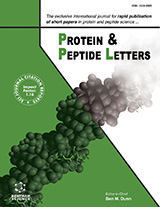
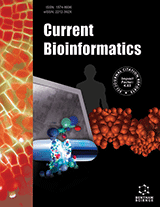
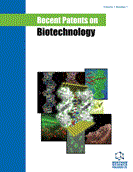
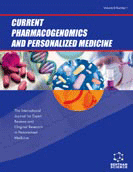
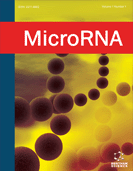
.jpeg)








